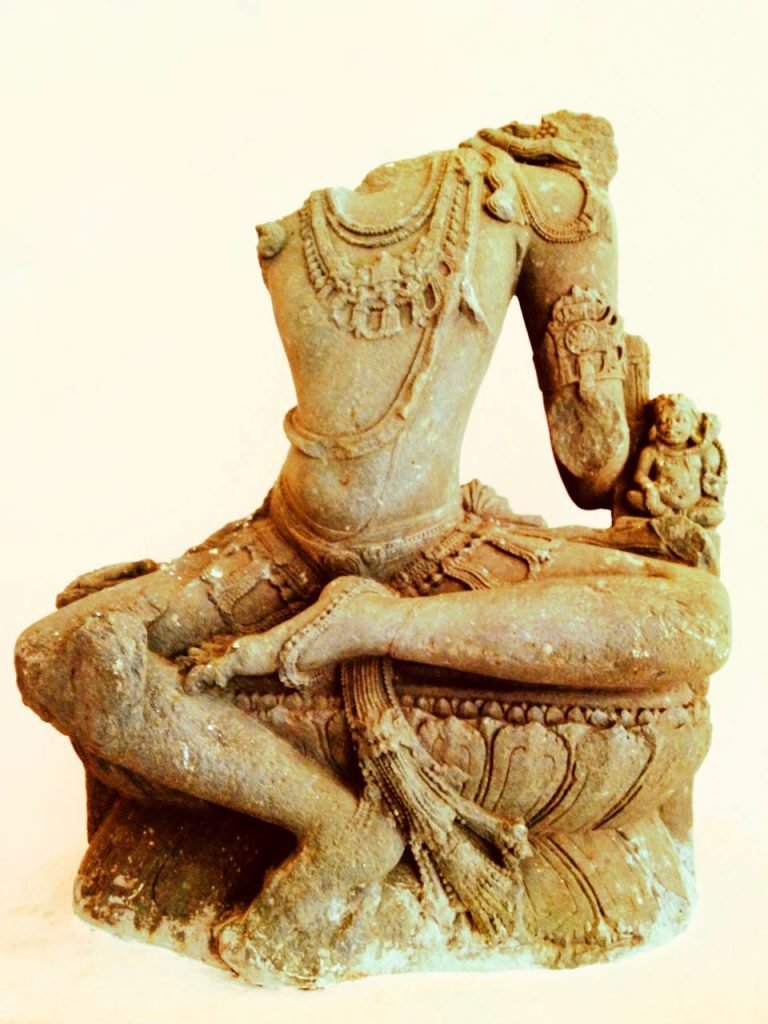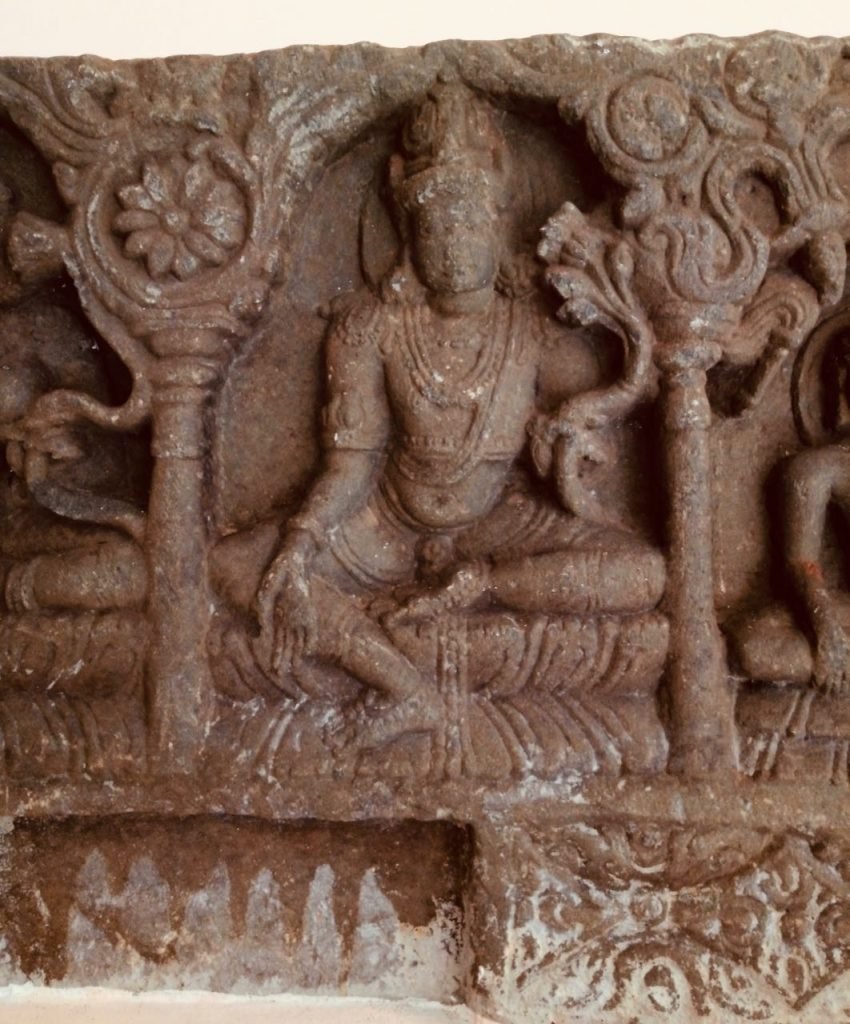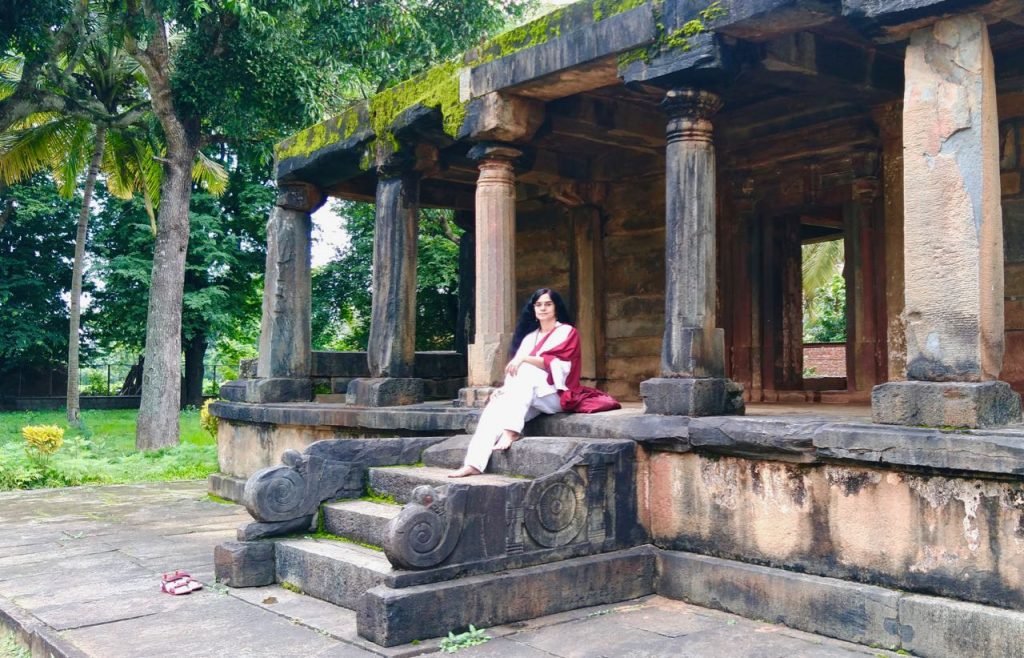Buddhism in Balligavi, a Medieval Center of Learning in Karnataka

Situated in the lush green Malnad region of Karnataka is Balligavi, a hamlet in the Shimoga district. Today, life here revolves around farming, except for a few archeological monuments and the remains of the glory of yesteryears shattered around in farms. As the archeological remains speak, once this was a bustling center of various schools of philosophy and practice systems. Mahayana / Vajrayana Buddhism had a strong presence here along with other schools such as Kalamukha sect of Lakulisha Pasupata Saivism, Jainism, Vaishnavism and Vedic Brahmanism. As evident from the inscriptions, during the period of 10th to 12th Century CE, Balligavi was home to major vidyapiṭhas (center of learning) of these five schools. That period is also known as the golden age of Balligavi, under the reign of the Western Chalukya empire. Balligavi was also a renowned trading and cultural center of medieval Karnataka.
Vajrayana Buddhism and the Vajrayana Yogini tradition in Balligavi

Balligavi was probably one of the last centers of Buddhism in Karnataka. Vajrayana Buddhism thrived here during the 10th to 12th Century CE. It is particularly noteworthy that a strong tradition of female Buddhist Yoginis flourished here during that period. As we shall see from the inscriptions, Nagiyakka, a Buddhist Yogini constructed a shrine to Bhagavati Tara (The female Buddha of compassion). Nagiyakka’s name appears in other inscriptions too as an important person along with the chiefs of the learning centers of the five schools. There is also an inscription that reveals how a minister of the king supported Yoginis, Kusalis, and Bhikshus.

There were at least two chaityas dedicated to Tara in Balligavi, but none of those structures are found now. However, a beautiful Tara statue of 4ft in height and multiple inscriptions were found from a field, and are now kept at the ASI Site Museum at Kedaresvara Temple. An elegant statue of Avalokitesvara (4ft in height, headless) is also preserved in this Museum. Recently, a headless Buddha statue was also obtained from the fields.
A Panel depicting the union of Wisdom and Compassion

A 6ft panel consisting of Buddha and Bodhisattvas is also preserved in the Museum. This would have adorned the lintel at the entrance to Jayanti-prabha Bauddha Vihara (The Splendor of Victory), a famed Mahayana/Vajrayana Buddhist Vihara in medieval Balligavi. The panel has an interesting theme depicting the essence of the Mahayana path – that wisdom and compassion are the two indispensable wings for the journey towards the perfect and complete Buddhahood. The central figure in the panel is Sakyamuni Buddha, flanked by Bhagavati Tara and Avalokitesvara to his right and Manjusri and Bhagavati Prajnāpāramita to his left. Tara and Avalokitesvara are the female and male principles of Compassion. Manjusri and Bhagavati Prajnaparamita are the male and female principles of wisdom. Bhagavati Tara is the personification of the enlightened activity that liberates all beings from suffering. Avalokitesvara is the boundless compassion that we can recognize in our own nature. Bhagavati Prajnaparamita is the personification of the perfection of wisdom that a practitioner attains by traversing the path. She is said to be the mother of all Buddhas because it is the perfection of wisdom that leads to Buddhahood. Manjusri is the discerning wisdom that we can realize in our own nature.

Avalokitesvara in the Panel, Balligavi 
Buddha in the Panel, Balligavi 
Manjusri in the Panel, Balligavi 
Tara in the Panel, Balligavi 
Prajnaparamita in the Panel, Balligavi
Inscriptions related to Buddhism in Balligavi
Many of the inscriptions recovered from the fields of Balligavi sheds abundant light into the details of the Buddhist presence in Balligavi during the 11th-12th Century CE.
Inscription #170 (Ref 1) says that in 1065 CE, minister Dandanayaka Rupabhattayya (of the Western Chalukya King) built this Vihara named ‘Jayanti pra… bauddha Vihara’ (Some letters are unclear in the inscription. This could be filled as Jayanti Prabha Bauddha Vihara, meaning The Buddhist Vihara with the splendor of victory. The mention of Prabha Bauddha also comes in inscription #169, giving a strong reason for this inference). According to the inscription, he also gave funds for the ritual offerings at the shrines of Tara Bhagavati (Buddha Tara), Lokesvara, Buddha and many attendant devatas.

This inscription further elaborates that Buddhist practitioners such as Yoginis, Kusalis (probably a reference to Yogis), and Bhikshus were offered food through a grant. The mention of Yoginis and Kusalis indicates that the Vihara was a Vajrayana center and that great importance was given to female practitioners. According to the inscription #169 (Ref 1), a woman named Nagiyakka constructed a temple for Tara Bhagavati in 1067 CE. It may be inferred that Nagiyakka herself was the chief yogini associated with that Tara Vihara, as according to another inscription of 1098 CE (#106, Ref 1), she was invited along with the chiefs of five Maṭhas (Centers) of various traditions for the ceremony of inaugurating another shrine for Lokesvara and Yogesvara.
Harmonious co-existence of various traditions in Balligavi

In many inscriptions, Balligavi was mentioned as Pancha-Maṭha sthana (the center of the five spiritual traditions – namely, Buddhism, Jainism, Saivism, Vaishnavism, and Brahmanism). As inscription #100 (Ref 1) recovered from Balligavi says, “There, the temples of Hari (Vishnu), Hara (Siva), Kamalāsana (Brahma), Vītaraga (Jain) and Buddha shine as the five Maṭhas (Centers) of that city like the five arrows in the world.”
The presence of varied spiritual communities supported by the king led to the arising of a harmonious culture and there was a lot of cross-learning happening as evidenced by inscriptions. During that period, the Saivites there belonged to Kalamukha sect of the Lakulisha Pasupata lineage. There were two groups of Kalamukhas in Balligavi. One group was centered around Koḍiya Maṭha (one of the five Maṭhas) based in the Kedaresvara temple. They consisted of celibate practitioners. The other group, based in Tripurantaka Temple, consisted of kauỊācara practitioners of the Saivite left-handed tantric tradition. According to inscription #102 (Ref 1), the Kodiya Maṭha group used to learn shad-darśanas (six schools of philosophy) in a positive way (not as systems to be opposed, as is the usual practice).

An interesting point to note is that the shad-darśanas as documented in this inscriptions consist of Nyāya, Vaiśeshika, Mīmamsa, Sāṅkhya, Bauddha (Buddhism), and ‘so forth’. Nowadays, shad-darshana is used to refer to the six Brahminical schools of Nyāya, Vaiśeshika, Mīmamsa, Vedanta, Yoga and Sāṅkhya, accepted by the so-called modern Hinduism. However, according to this 12th Century inscription, there was no such division of Indian systems into Hindu and non-Hindu at least in Balligavi. Also, as we noted in the article on Buddhism in Dharwad, Gadag and Koppal, they honored Chatus-samaya (that of respecting the four traditions of Saiva, Vaishnava, Bauddha, and Jina) indicating that there was no formation of a monolithic religion at that time in Balligavi.
Remains of a settlement belonging to the Nath tradition were also found near the area where the Buddhist remains were excavated. Possibly, with time, the Vajrayana Buddhist sects there would have flowed into the Nath tradition, just as in many other places of South India when it became difficult for Buddhism to exist by itself.
By the middle of the 12th Century, Balligavi also became the cradle for a devotional socio-religious movement, Lingayat, that captured the fascination of the entire Karnataka. Alamaprabhu and Akka Mahadevi, two important saints of the Lingayat movement were born in this area.
Conclusion
Whatever we know about Buddhism in Balligavi is based on the random findings of inscriptions and sculptures from the fields there. However, no proper archeological excavations have been conducted there.
One of the catur-mukha-linga recovered from Balligavi dates to the Satavahana-Kadamba period of 4th Century CE. Further, Balligavi is close to Banavasi, the capital of Kadambas and Buddhism flourished there during the Satavahana and Kadamba period. So, it is very likely that detailed archeological studies may reveal more about an earlier history of Balligavi.
References
- Putheri (Buddheri) – The Southern most Stupa of Ancient India - January 19, 2023
- History of Buddhism in Kerala - January 12, 2022
- Buddhism in Kallakurichi, Tamil Nadu - March 4, 2021

